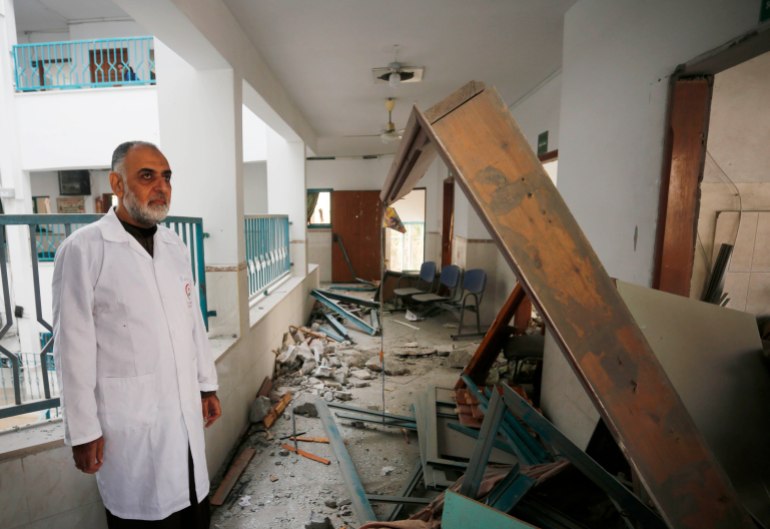Six weeks after the ground invasion of the Gaza Strip started, Israeli forces and Hamas may have changed how they fight, using a weeklong truce to reassess performance and adapt their approach to battlefield conditions and the enemy’s actions.
A notable prediction by all experts that we appear to have got wrong – or has not come about yet – was the expected underground carnage. There has not (yet) been much fighting in the tunnels, and we have to wonder whether the foes will want to go into them at all.
A cautious Israel
Wary of the length, spread and sophistication of Hamas’s tunnels, the Israeli army was treading carefully. Urban areas were bombed heavily from the air from the start of the war on October 7, stopping only when Israeli ground forces were about to go in.
Before the truce at the end of November, Israel managed to encircle Gaza City. Many Palestinians escaped to the south, heeding Israeli evacuation orders or simply fleeing for their lives.
After the perimeter of Gaza City was taken, Israeli sources leaked that some field commanders felt the price in soldiers and equipment was lower than expected with 104 combat casualties so far. But the high command opted for a cautious approach, staying out of the densest, built-up areas: parts of the old centre and Jabalia refugee camp.

Seemingly satisfied with what it did in Gaza City, the Israeli command decided to repeat the strategy in the south, where it has now almost fully encircled Khan Younis.
It is impossible to determine whether the heavy civilian casualties and destruction of Palestinian infrastructure were collateral damage or part of the battle plan. This is likely to be debated for years, and there may never be one answer.
Hamas preserving its tunnels?
On the ground, Hamas fought as expected: surprise attacks on Israeli forces using mainly shoulder-launched anti-tank weapons. Israeli casualty updates give insight into the fighting by comparing numbers of soldiers killed with the type, duration and reach of their advances.
But it is difficult to track incapacitated armoured vehicles, and we cannot rely on Hamas’s claims of destroyed Israeli tanks and armoured personnel carriers, which are exaggerated to boost morale.
Hamas does not allow much information to leak, but by careful observation, a pattern appears: The leadership of the Qassam Brigades, the armed wing of Hamas, seems to be trying to keep the tunnels hidden and intact as long as possible.
Rather than using them for daily tactical and operational purposes, it seems to prefer to keep them as shelters during bombardments, weapons storage and cover for its troops on the move.
So Hamas fighters do not seem to be popping out of tunnel shafts and immediately targeting Israeli soldiers. They use tunnels to reach intended zones of operation but surface farther away and move through buildings and rubble for some distance to keep the locations of the shafts secret.
What has changed? Has anything changed?
Assessing why neither side initiated the tunnel war is a bit of a chicken and egg situation: impossible to say who did what first.
The Israeli side was always wary of tunnel warfare, knowing it would be casualty-heavy. But after two incidents early in the fighting in which four special forces soldiers in one instance and two engineering troops in another were killed by booby traps as they tried to enter tunnels, the initial reluctance may have turned into a staunch unwillingness to commit soldiers to underground combat.
Caution in handling the tunnels means the Israeli army now just identifies and marks tunnel entrances, blocking or destroying them without entering – except in cases when it needs to go in the tunnels for public relations like at al-Shifa Hospital.
But there are thousands of tunnel openings, and, aware of the difficulties of finding them all, the Israeli army is reportedly considering pumping them full of seawater, drowning those hiding underground or forcing them to come up and fight above ground.

There may be a psychological reason for Israel to consider water as a weapon: Could it be a revenge of sorts on the Arab world?
In 1973, the Egyptian army used fire hoses to breach Israeli sand berms on the Sinai shores of the Suez Canal. While high earthen walls were effective in protecting Israeli positions against shelling, canal water shot from fire hoses cut through the berms like a hot knife through butter, allowing Egyptians to push the Israeli army back.
Fifty years later, the idea of using seawater as a weapon is being mulled although it is doubtful that it would be as decisive in Gaza in 2023 as it was in Sinai in 1973.
Nobody except Hamas knows with certainty how the Hamas tunnels are structured, but multiple videos show that the network has watertight lock doors so it is probable that Hamas could protect parts of the network by closing sections off and bypassing any flooded ones.
Over and above come the practical issues with this purported Israeli plan. Two million litres (roughly 530,000 gallons) of seawater would be needed to flood about a kilometre (0.6 miles) of tunnel, assuming the shafts are 2 metres (6.6ft) high and 1 metre (3.3ft) wide.

Multiply that over the estimated 400km (250 miles) the network stretches, and the logistics become staggeringly complex.
The pumps and pipes needed for this strategy would have to stretch from the seashore to where the tunnels begin, which is not a short distance, given that the tunnels are in the clay soil that starts away from the sandy shore. Having so much exposed equipment would open it up to attacks and sabotage.
If Israel does choose to do this and somehow the technical part is successful, there remains the intractable problem of figuring out which section of tunnel it is pumping water into and what that means in the grand scheme of things.
But in reality, the main reason for Israel to refrain from acting offensively inside the Hamas tunnel network is the remaining captives. According to an official Israeli count, 138 people taken from southern Israel on October 7 are still being held in the tunnels by Hamas.
With nearly all hostages now Israelis, some with dual US citizenship, it is hard to envisage that any Israeli politician or military commander would be willing to risk his reputation at home by issuing orders to destroy parts of a tunnel network in which their own could be killed.









